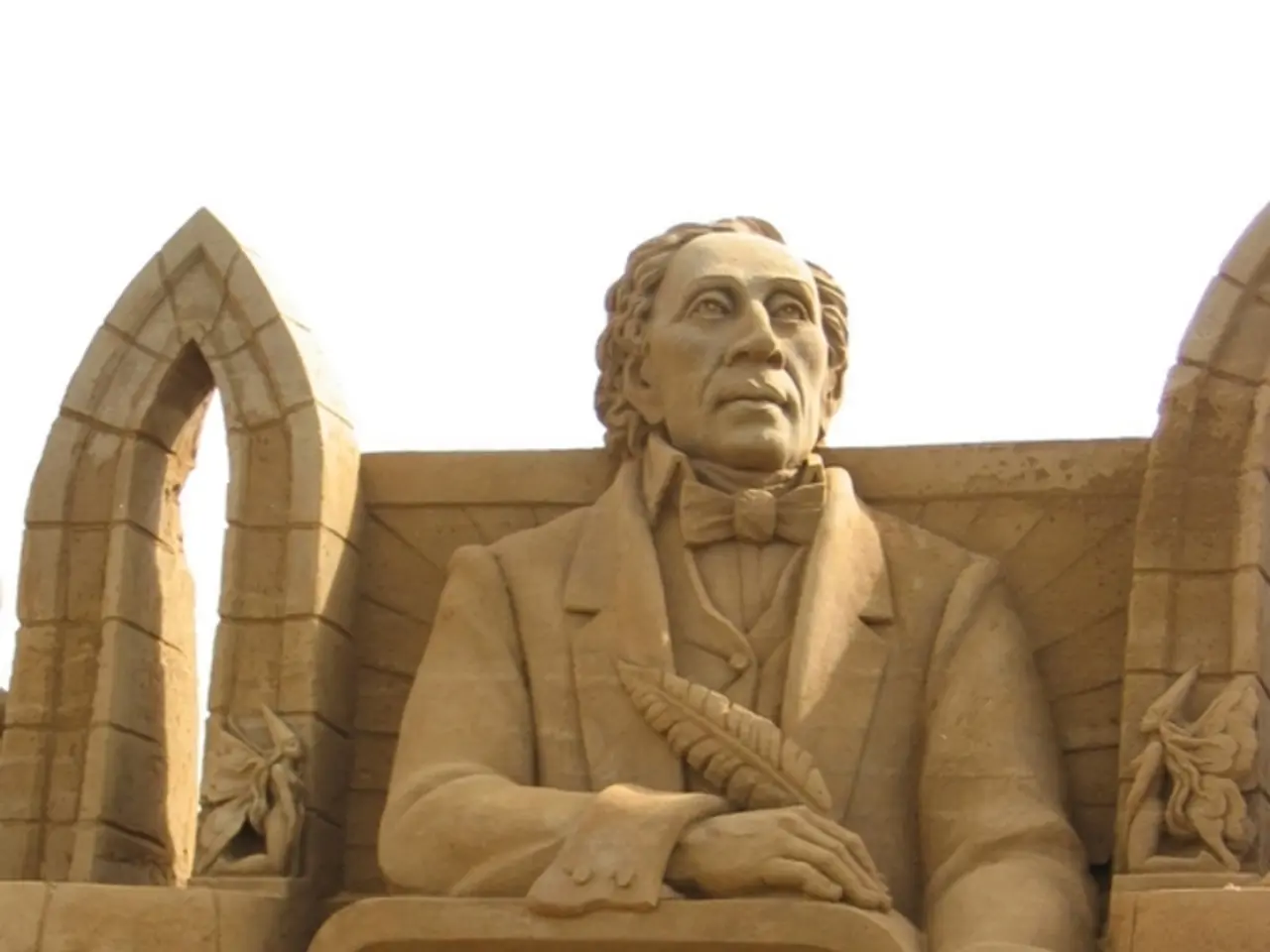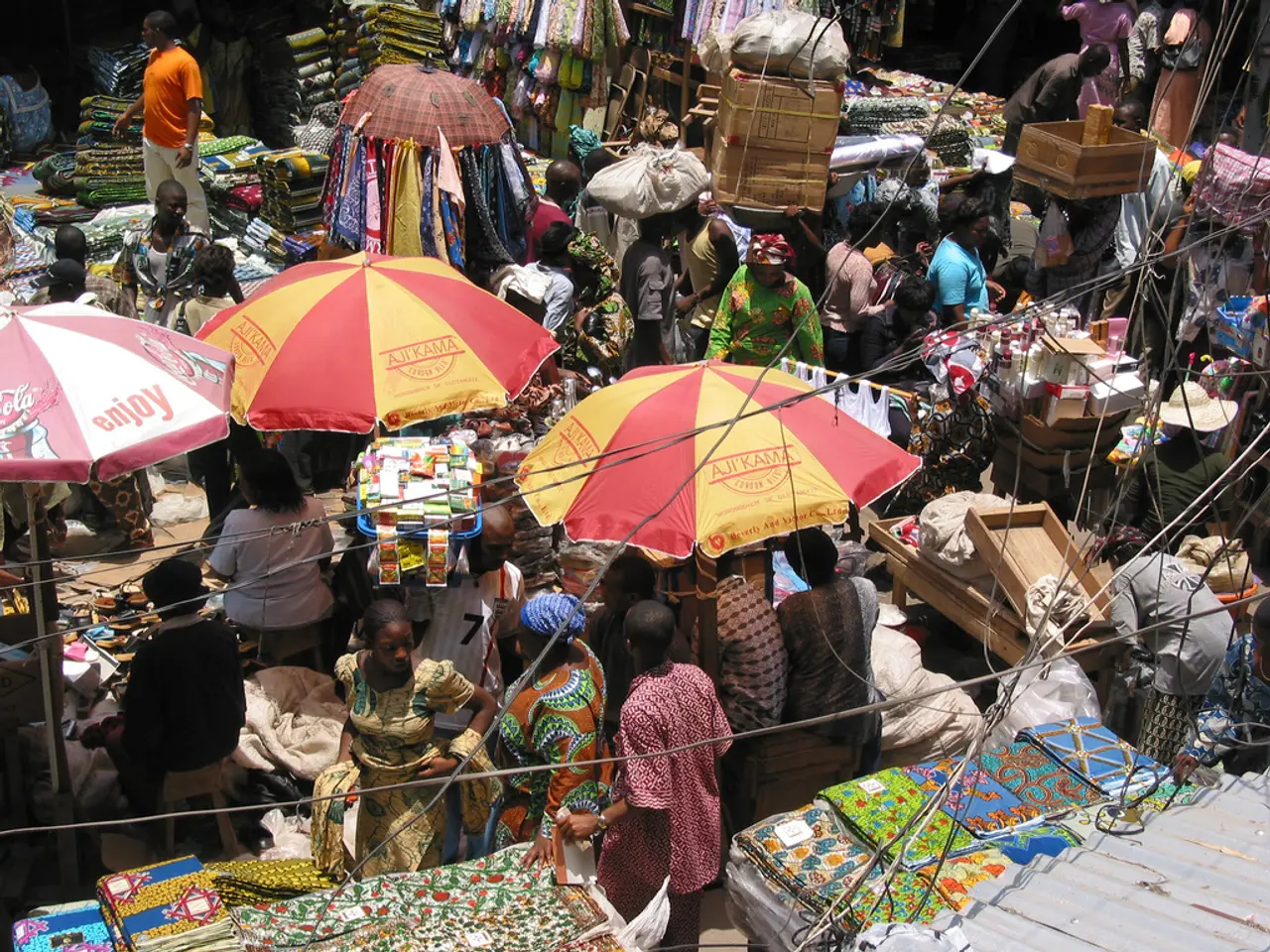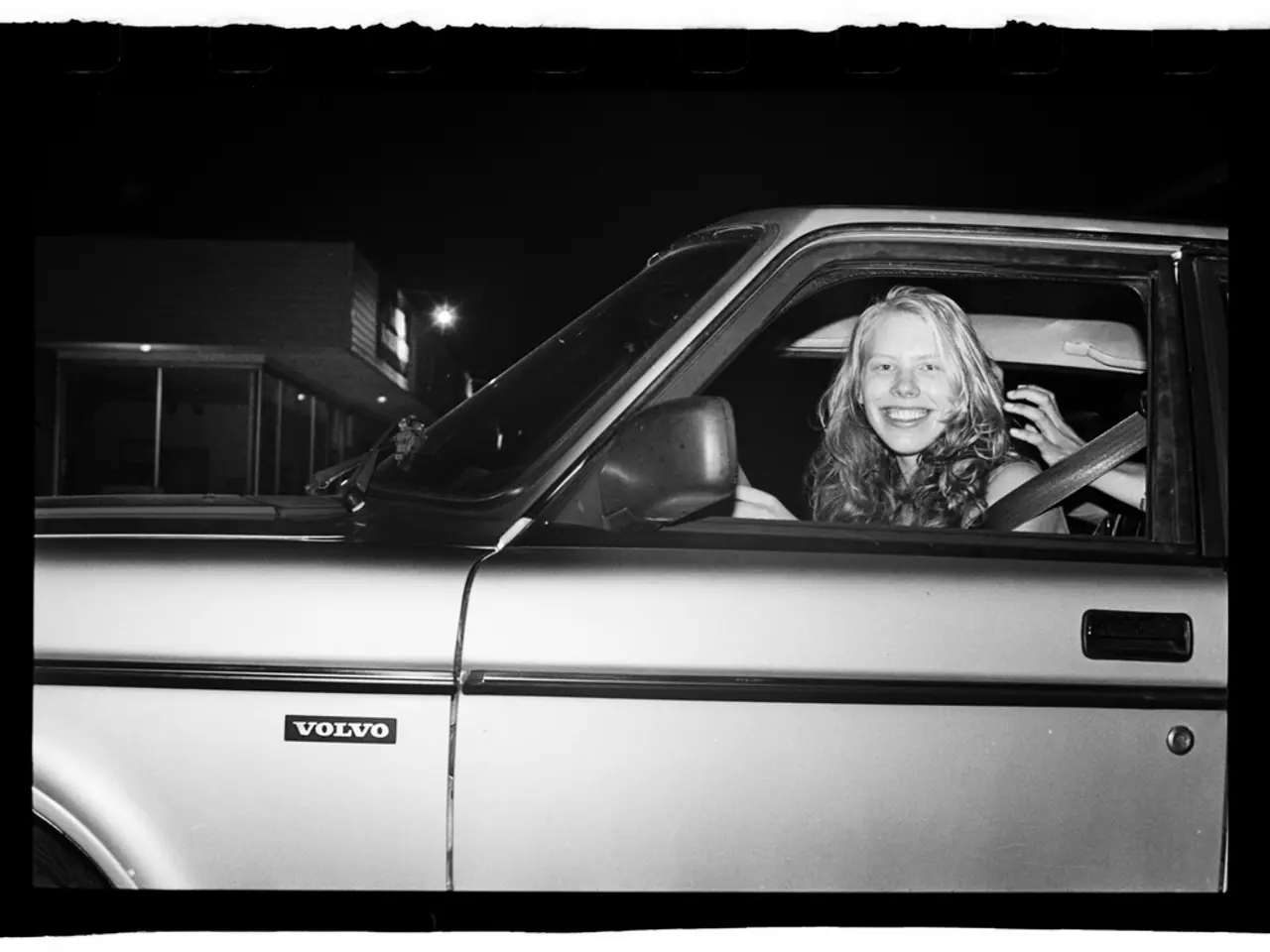Carved on a low relief.
In a groundbreaking study, Brazilian expert Cicero Moraes has proposed a new theory that could shed light on one of the most debated and venerated artifacts in human history – the Shroud of Turin.
Moraes' research, published in the journal Archaeometry, compares two scenarios: one with a virtual cloth draped over a human body, and the other with a cloth placed on a bas-relief sculpture. His findings show that the second scenario, with the cloth on a bas-relief sculpture, almost exactly matches the photographs of the Shroud [1][2][5].
The bas-relief sculpture hypothesized by Moraes is a low-relief artistic representation, possibly made of wood, stone, or metal, rather than a fully three-dimensional human body. This hypothesis would explain the anatomical features and proportions of the image on the Shroud.
Moraes created two digital 3D models – a fully three-dimensional human body and a low-relief (bas-relief) model resembling a flattened statue. He then simulated draping a digital fabric over each. The resulting imprint from the low-relief model corresponded more closely to the Shroud’s actual image, showing less anatomical distortion compared to the model with a full 3D body [1][2].
The use of a bas-relief sculpture would explain the intricate details and accuracy of the Shroud image, without the need for it to have been in direct contact with a three-dimensional body. This theory does not, however, explain the presence of human blood and pollen from species present 2000 years ago on the relic [6].
The discovery places the Shroud of Turin correctly in its historical context as a product of medieval craftsmanship. It is important to note that the bas-relief itself is not attributed to a known individual creator but is positioned as a medieval artistic technique frequently employed in Europe at that time for religious depictions, such as carved tombstones [1].
Moraes' work is an example of how modern digital technologies can shed new light on historical questions. His study adds a crucial piece to the understanding of the Shroud's technical creation. However, Andrea Nicolotti, a professor of History of Christianity at the University of Turin, supports Moraes' hypothesis but considers it not particularly groundbreaking, as scholars have known for at least four centuries that the body image on the Shroud could not have been created through contact with a three-dimensional body [7].
The 1989 study conducted through radiocarbon dating placed the creation of the Shroud of Turin between 1260 and 1390 after Christ. Moraes' research opens the mystery of identifying the anonymous medieval master who created this remarkable testimony to the techniques and religious devotion of the medieval period [8].
The study was conducted through a 3D simulation and is available online on Wiley's journal, published by Oxford University and the Research Laboratory for Archaeology and the History of Art (Rlaha) [3].
[1] Moraes, C. (2021). The Shroud of Turin: A Reexamination of the Image Formation Theory. Archaeometry, 63(5), 835–849. [2] Moraes, C., & Alves, L. (2021). The Shroud of Turin: A 3D Simulation Study. Journal of Archaeological Science: Reports, 30, 104140. [3] The Shroud of Turin Study. (2021). Wiley Online Library. https://onlinelibrary.wiley.com/doi/abs/10.1002/jsr.2904 [4] The Shroud of Turin. (n.d.). Britannica. https://www.britannica.com/topic/Shroud-of-Turin [5] The Shroud of Turin: A New Theory. (2021). BBC News. https://www.bbc.com/news/science-environment-58102584 [6] The Shroud of Turin: Blood and Pollen Mysteries Remain Unsolved. (2021). National Geographic. https://www.nationalgeographic.com/science/article/shroud-of-turin-blood-and-pollen-mysteries-remain-unsolved [7] Nicolotti, A. (2021). The Shroud of Turin: A New Theory. Interview with Andrea Nicolotti. BBC News. https://www.bbc.com/news/science-environment-58102584 [8] The Shroud of Turin: A Brief History. (2021). History.com. https://www.history.com/topics/european-history/shroud-of-turin-history
Science and technology were instrumental in Moraes' study that proposes a new theory about the Shroud of Turin. His research used digital models and 3D simulations to compare the image on the relic with a cloth draped over a bas-relief sculpture, finding a closer match compared to being over a three-dimensional human body. This medical-conditions aspect sheds light on the intricate details and accuracy of the Shroud image without the need for direct human contact, though it does not explain the presence of human blood and pollen on the relic.




